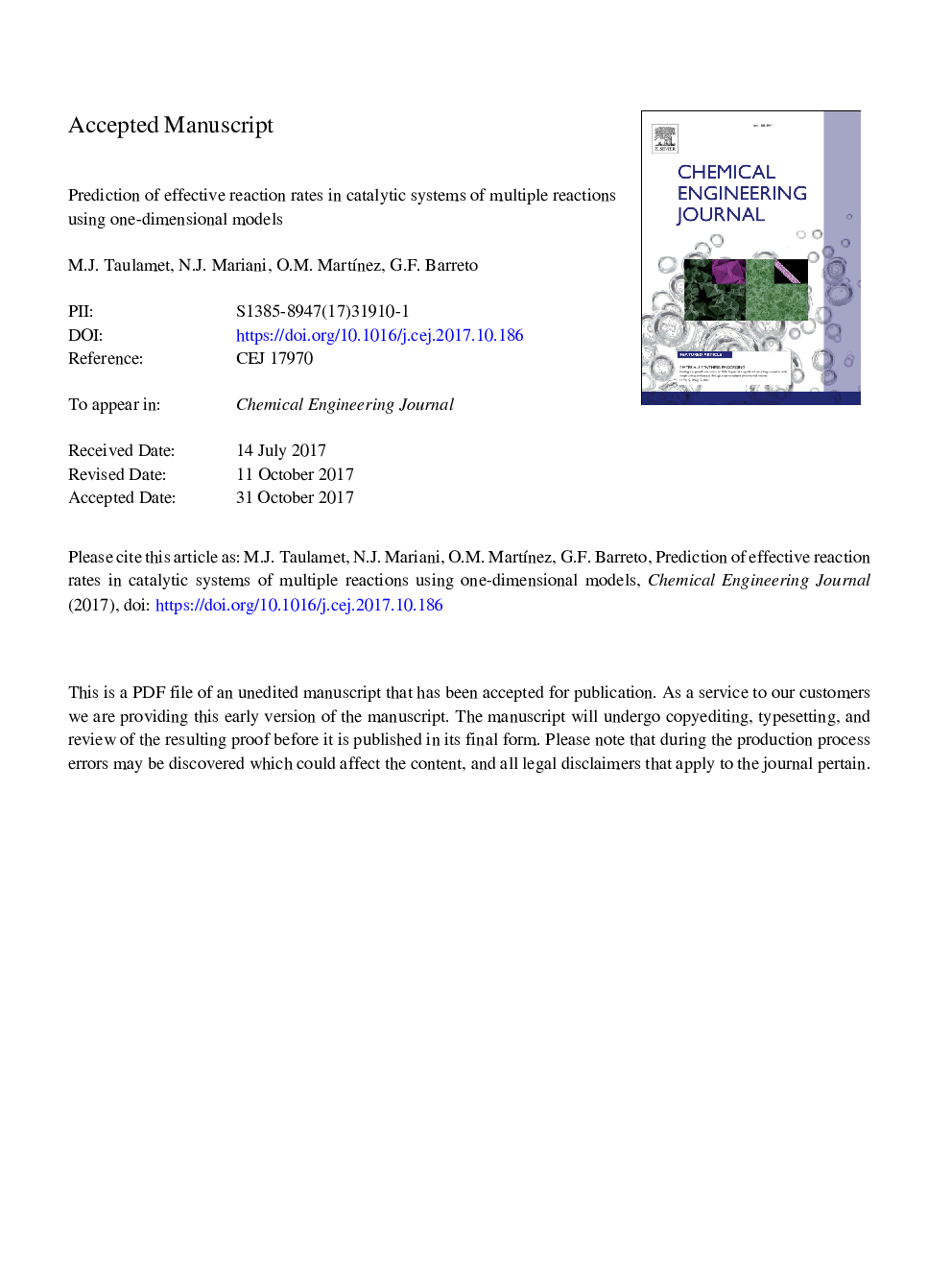| Article ID | Journal | Published Year | Pages | File Type |
|---|---|---|---|---|
| 6580956 | Chemical Engineering Journal | 2018 | 34 Pages |
Abstract
In this work two one-dimensional (1D) models are used to approximate the catalytic behavior of three-dimensional (3D) shaped pellets. One of the 1D models employs a single parameter and is identified as Generalized Cylinder (1D-GC), while the second model, named Variable Diffusivity model (1D-VD), makes use of three parameters. Both models have been introduced in previous contributions and their performances were successfully tested for single catalytic reactions. A conventional system of two first order reactions in series and the process of selective hydrogenation of butadiene in the presence of 1-butene that shows strong inhibition effects are considered. The pellet shapes for which the largest errors were detected when using the 1D models in the cases of a single reaction were selected for this study. It was found that the use of the 1D-GC model leads to errors in the estimation of the effective reaction rate of up to around 7% for the first-order series-reaction system and up to 20% for the hydrogenation selective process. In contrast, the 1D-VD model can be used with a maximum error of the order of 1% for the first-order series-reaction system and about 4% for the selective hydrogenation system.
Keywords
Related Topics
Physical Sciences and Engineering
Chemical Engineering
Chemical Engineering (General)
Authors
M.J. Taulamet, N.J. Mariani, O.M. MartÃnez, G.F. Barreto,
